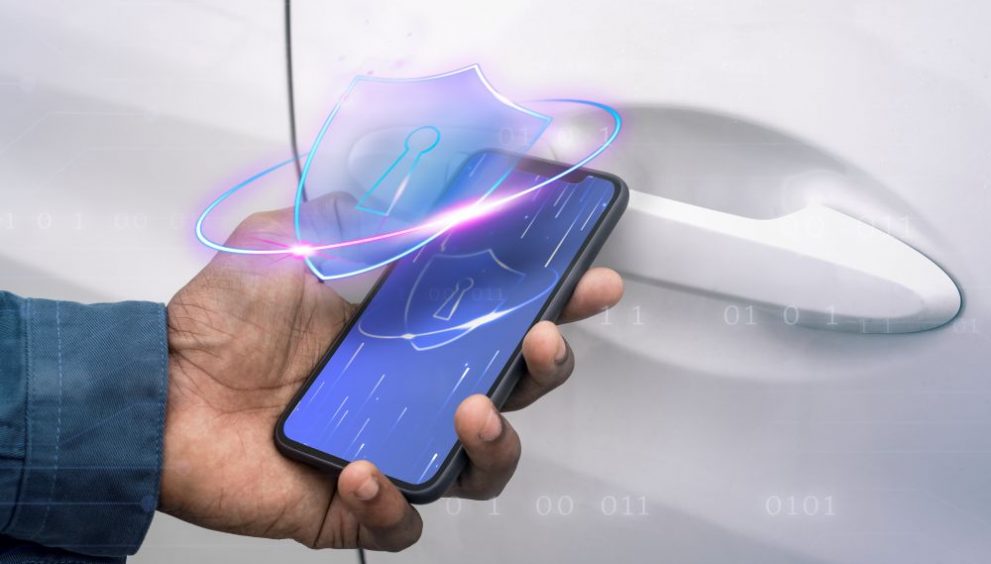In times where our smartphones and tablets store a wealth of personal information, it’s crucial to take proactive measures to protect our data from unauthorized access. Two simple yet effective ways to safeguard your personal information are by using device locks and screen protectors. These tools act as a first line of defense against potential security breaches, ensuring that your sensitive data remains private.
Device Locks: The First Line of Defense
Setting up device locks is one of the most fundamental steps in securing your mobile devices. Device locks, such as PINs, passwords, or biometric authentication (like fingerprints or facial recognition), prevent unauthorized individuals from accessing your device and the data stored within.
- PIN: A numeric code that must be entered to unlock the device
- Password: A combination of letters, numbers, and symbols for added security
- Fingerprint: Uses your unique fingerprint to authenticate and unlock the device
- Facial Recognition: Utilizes the device’s camera to recognize your face and grant access
By enabling device locks, you create a barrier between your personal information and potential intruders. Even if your device is lost or stolen, the lock will deter casual attempts to access your data.
Types of Device Locks: Choosing What Works for You
When it comes to device locks, you have several options to choose from. Each type of lock has its own advantages and considerations.
- Passcodes: A passcode is a simple numeric code, typically 4-6 digits long. While easy to remember, passcodes can be vulnerable to guessing or brute-force attacks.
- Fingerprints: Many modern devices offer fingerprint scanners for authentication. Fingerprints are unique to each individual, making them a secure choice. However, they can sometimes be less reliable than other methods.
- Face Recognition: Facial recognition technology uses the device’s camera to scan and verify your face. It offers a quick and convenient way to unlock your device, but it may struggle in low-light conditions or if you significantly change your appearance.
- Pattern Locks: Pattern locks involve drawing a specific pattern on a grid of dots. They provide a visual way to secure your device but can be less secure than other methods if someone observes your pattern.
Consider your personal preferences and the level of security you require when selecting a device lock. It’s essential to choose a method that you feel comfortable using consistently.
The Role of Screen Protectors in Data Security
While device locks prevent unauthorized access to your device, screen protectors add an extra layer of visual privacy. In public spaces, such as cafes, airports, or public transportation, it’s easy for others to glance at your screen and potentially see sensitive information.
Screen protectors, particularly privacy screen protectors, are designed to limit the viewing angle of your device’s display. They make it difficult for anyone not directly in front of the screen to see its contents clearly. This feature is especially valuable when working with confidential documents, accessing financial information, or viewing private messages.
Benefits of Using Privacy Screen Protectors
Privacy screen protectors offer several advantages beyond just protecting your screen from scratches and cracks:
- Enhanced Visual Privacy: Privacy screen protectors significantly reduce the visibility of your screen from side angles. This means that even if someone is sitting next to you, they won’t be able to easily read your screen.
- Improved Confidentiality: When dealing with sensitive information, such as client data, financial records, or personal conversations, privacy screen protectors help maintain confidentiality in public settings.
- Reduced Eye Strain: Some privacy screen protectors also have anti-glare properties, which can reduce eye strain caused by reflections and glare from ambient light sources.
- Compatibility: Privacy screen protectors are available for a wide range of devices, including smartphones, tablets, and laptops, making them a versatile solution for protecting your data across multiple devices.
Combining Device Locks and Screen Protectors for Enhanced Security
While device locks and screen protectors are effective individually, combining them provides a comprehensive approach to protecting your personal data. By using both methods together, you create multiple barriers against unauthorized access and visual snooping.
For example, even if someone manages to bypass your device lock, the privacy screen protector will still obscure the contents of your screen from prying eyes. This layered security approach significantly reduces the chances of your personal information falling into the wrong hands.
Regularly Update Device Security Features
As technology evolves, so do the methods used by cybercriminals to exploit vulnerabilities. To stay ahead of potential threats, it’s crucial to regularly update your device’s security features. This includes updating your device’s operating system, as well as any security apps or software you have installed.
- Operating System Updates: Fixes security vulnerabilities and adds new security enhancements
- Security App Updates: Ensures your device is protected against the latest threats
- Biometric Data Updates: Improves the accuracy and reliability of fingerprint or facial recognition
Keep Your Device and Apps Updated
In addition to updating your device’s security features, it’s equally important to keep your device and installed apps updated. App developers regularly release updates that address security vulnerabilities, fix bugs, and improve performance.
To ensure your device and apps are always up to date:
- Enable automatic updates for your device’s operating system
- Regularly check for and install app updates from official app stores
- Remove any unused or outdated apps that may pose security risks
Be Aware of Physical Security Risks
While device locks and screen protectors provide digital and visual security, it’s essential not to overlook physical security risks. Always be mindful of your device’s physical location and who has access to it.
Some best practices for physical device security include:
- Never leave your device unattended in public spaces
- Use a secure case or bag to transport your device
- Be cautious when allowing others to use or borrow your device
- Consider using a physical lock or cable to secure your device in high-risk environments
Educate Yourself on Data Protection Best Practices
It is crucial to stay informed about the latest data protection best practices. Regularly educate yourself on new security measures, emerging threats, and industry recommendations.
Some ways to stay informed include:
- Reading reputable technology and cybersecurity blogs or news sources
- Attending webinars or workshops on data protection and privacy
- Participating in online forums or communities focused on device security
- Consulting with IT professionals or security experts for personalized advice
Stay Secure with Quick Heal
Protecting your personal data is a critical aspect of navigating the digital world safely. By using device locks and screen protectors, you can create a robust defense against unauthorized access and visual snooping. Remember to choose a device lock method that suits your needs, and consider investing in a high-quality privacy screen protector for added visual security.
For those seeking a reliable and user-friendly security solution, Quick Heal Total Security offers a range of features to protect your devices and personal information. By taking proactive measures to secure your data, you can enjoy peace of mind and confidently navigate the digital landscape.
Check Out Our Full Antivirus Range



